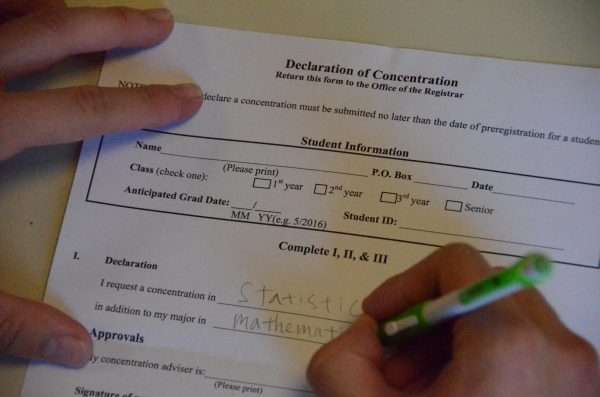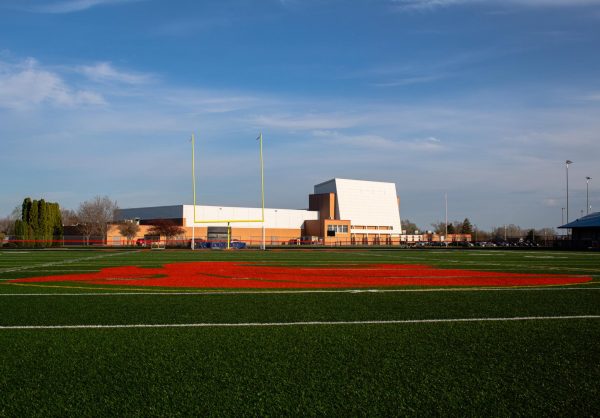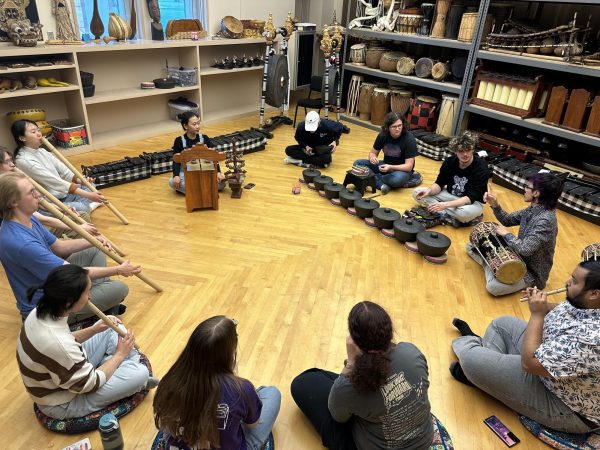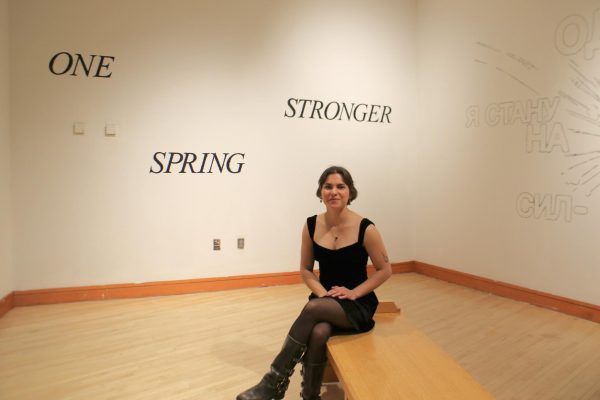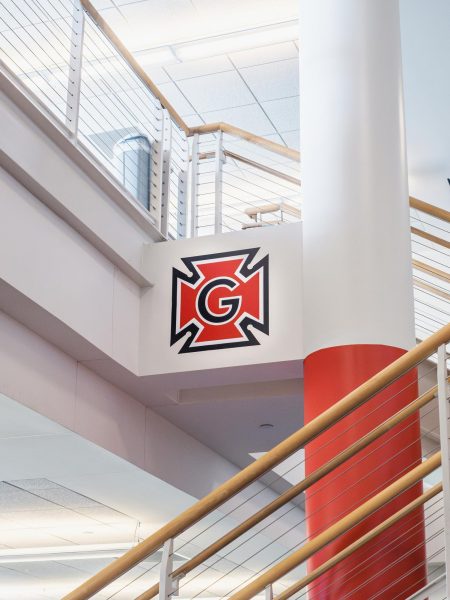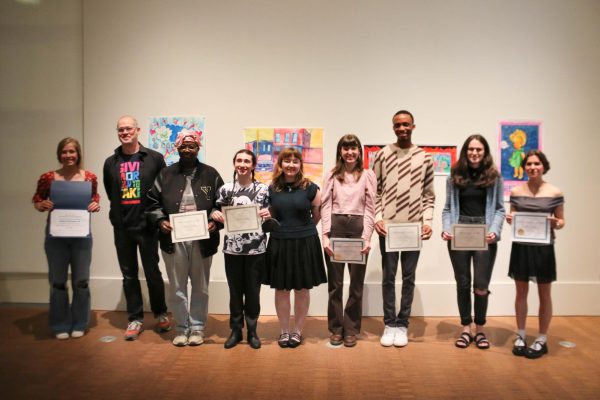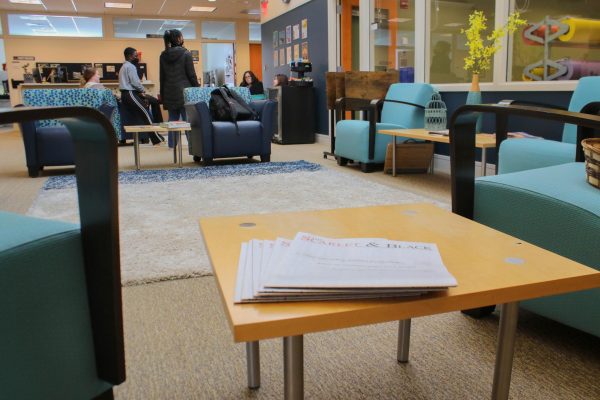Grinnell soars to new heights with Elkes Airport Project
October 31, 2022
The Elkes Airport Project, proposed and sponsored by Steven Elkes `83, aims to conduct a feasibility assessment of significantly expanding the Grinnell Regional Airport to allow direct flights from major cities into Grinnell.
In collaboration with the Donald and Winifred Wilson Center for Innovation and Leadership (Wilson Center), and under the guidance of Michael Lawrence, director of the Business and Finance Career Community for the Center for Careers, Life and Services, seven newly hired students will aim to conduct research and develop the project into a business plan. It will then be pitched and presented to Grinnell College in March 2023.
The intention behind the project is to initiate subsidized charted flights and ease the commute to Grinnell for students, staff, faculty members and guest speakers. The College already charters buses to and from nearby cities for academic breaks — the airplane service would hypothetically replicate this concept and substitute some of the buses with airplanes.
According to Jefferey Blanchard, director of the Wilson Center, the researchers will look into which companies would charter these flights, which jets would be used, the number of passengers the jets can hold, who would be interested in using this service, the cost of implementation, how this would affect different groups on campus, the environmental impact of direct flights to Grinnell versus current methods of commuting and many other factors that may offer the College a valid reason to participate in this service or not.
Susan Ferrari, director of corporate, foundation and government relations at the College, approached Blanchard with the project several years after Elkes first proposed the idea, according to Blanchard. Blanchard said he is working with Lawrence to plan the scope of the research, the work streams and other forms of mentorship. Lawrence will work directly with the students to execute the feasibility assessment and business plan.
Given the possible time and cost constraints associated with air transportation, Blanchard said he describes the project as an “ambitious” one. He said that he is hopeful but sees the idea as cost-prohibitive, and a lot of it is speculative.
“I think all we have right now is questions and a plan to answer questions,” Blanchard said. “But like all research, this is research into whether or not this thing will work. Answering questions will raise new questions.”
Though Lawrence and Blanchard said the timeline is not fully figured out, they said they aim to use the Wilson Center’s TedX event at the College on Feb. 18 of next year as the date of a trial run. The event would already require a group of people to fly across the country, come to Grinnell and attend, further supporting the pitch to the College administration, according to Blanchard.
The project is one of four projects which Elkes will be donating $20,000 to this year. Though he went through a period of almost 26 years without direct interaction with the College after his graduation, a call from a student who wished to improve the College’s student-run radio station KDIC as part of a “phonathon” call caused him to re-engage and donate to the College, according to Elkes.
“The earlier in life, you find out that you can actually accomplish something that makes a difference. I think the more inspired you are to do things and to continue that later on,” said Elkes.
As his engagement with the College grew, and he started visiting more often, he said the commute he took in 2012 inconvenienced him. He currently resides in Westchester, New York. To travel to the College, he would have to take a flight from either White Plains Airport or LaGuardia Airport to Des Moines International Airport, followed by a shuttle from Des Moines to the College.
Seeing the Grinnell Airport on the drive down to the College, he thought there was a possible solution there, he said.
The Airport is one mile south of the city alongside state Highway 146. Its one runway is 5,200 by 75 feet. According to Russ Behrens, Grinnell city manager, who was present at an information session for the project, it currently has three main uses: agricultural applications, business travel and recreational aviation.
“It’s gonna boil down to the economics of it. I am not aware of any physical limitations that would be so challenging that they couldn’t be overcome,” said Behrens. He said that he does not want to speculate on the feasibility but will offer the researchers technical assistance.
I think it would make a change and make Grinnell stand out from other colleges that may not offer this.
— Gabriela Roznawska `26
Elkes said he believes this project also has the potential to help the College reach its diversity, equity and inclusion goals as the location and costs to come here may prohibit a wide range of people.
He said that if the College is going to spend money, “think of applying some of it to the things that make them [students] even more happy or more inclined.”
Similar to Elkes’ past donations, most of which went directly to projects like the Data Analysis and Social Inquiry Lab rather than a general fund, he said he wanted the project to be student guided.
Gabriela Roznawska `26, one of the students hired for the project, developed an interest in aviation and entrepreneurship while she was in Poland. She also describes the project as ambitious and hopes to bring enthusiasm about making things happen to the table.
“I think it would make a change and make Grinnell stand out from other colleges that may not offer this,” she said.
“Most of the time, when anyone proposes anything new, the default answer is always no,” said Elkes. “Even if it turns out not to be practical, the exercise of going through it is a very valuable, real-world case study.”






























































